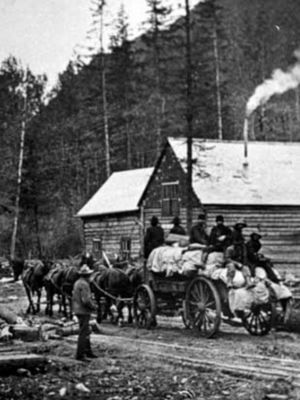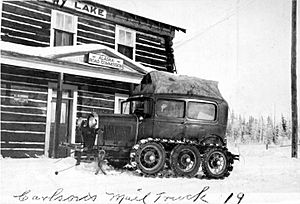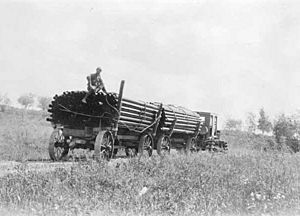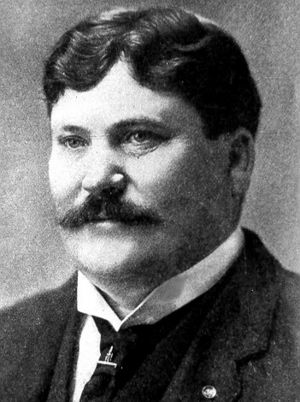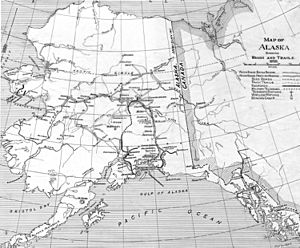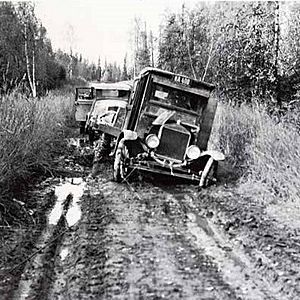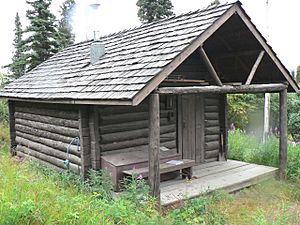Alaska Road Commission facts for kids
The Board of Road Commissioners for Alaska, usually called the Alaska Road Commission or ARC, was a group created by the U.S. government in 1905. Its main job was to build and improve roads in Alaska when it was still a territory.
The ARC was part of the U.S. War Department at first. It was responsible for building many of Alaska's most famous roads, like the Richardson Highway, Steese Highway, and Elliot Highway.
In 1932, the commission was moved to the Department of the Interior. Later, in 1956, it became part of the Bureau of Public Roads. Today, the Alaska Department of Transportation & Public Facilities is in charge of Alaska's roads.
Contents
Why Alaska Needed Roads
Before the 1870s, the vast Alaska Interior had almost no roads. The only way to get around was by using a network of trails created by Native Alaskan people. Russian and American traders and gold prospectors also used these trails.
During the late 1800s, more people came to Alaska to search for gold. They needed better ways to travel. The US Army began to survey the land to find the best route for a road. They decided to build a trail from the port city of Valdez to Eagle.
By the early 1900s, the U.S. Congress realized that Alaska needed a proper system of roads and trails. On January 27, 1905, they passed a law to create a special board to manage this work. This group became the Alaska Road Commission (ARC).
How the Commission Worked
The ARC was led by a board of three people:
- A president, who was in charge of everything.
- An engineer, who managed the actual road-building work.
- A secretary, who ran the office and paid the bills.
Many of the board members were officers from the US Army, including the first president, Wilds P. Richardson.
Getting Money for Roads
Building roads is expensive. The ARC got its money from a few different places. Some money came from business license fees collected in Alaska. But this wasn't enough, so the U.S. Congress also gave money to the ARC each year.
There was also a special tax for people living in areas without a town government. They had to either work on the roads for two days or pay $8. In 1912, this was changed to a $4 tax that every person in Alaska had to pay.
Working with the Alaska Territory
In 1917, the government of the Alaska Territory created its own road boards. These local boards often worked with the ARC. They would approve road projects and give the ARC money to build them. Sometimes, the same person was in charge of both the ARC district and the territorial road board.
What the ARC Built
The ARC started working right away. By 1907, it had already marked 247 miles of winter trails, built 40 miles of new road, and improved 200 miles of old trails. One of its first big projects was building a trail from Gulkana to the new mining town of Fairbanks.
By 1922, the ARC had built over 1,100 miles of wagon roads and thousands of miles of trails and winter sled roads. By 1932, the commission had built:
- 1,231 miles of roads
- 1,495 miles of sled roads for winter travel
- Over 4,700 miles of trails
- 26 airfields for planes
- 32 shelter cabins for travelers
How Roads Were Built
At first, the ARC said its roads weren't made for cars. But by 1922, about 90% of the summer traffic was from cars and trucks.
The roads were usually simple. A light-traffic trail might be 10 feet wide, while a busier road would be 16 feet wide. In areas where the ground was permanently frozen (a condition called permafrost), they used a special technique. They laid logs side-by-side to create a sturdy surface, which looked like the pattern on corduroy fabric. This is called a corduroy road.
Crossing rivers was a big challenge. At first, they used ferries to carry people and wagons across. As they got more time and money, the ARC built large bridges, like the 450-foot bridge over the Tazlina River.
Later Years and Challenges
In 1932, the ARC was moved to the Department of the Interior. This department also ran the Alaska Railroad. To encourage people to use the railroad, the government put a toll, or a fee, on the Richardson Highway for commercial trucks. The tolls were very high, sometimes over $100.
The truck drivers, known as freighters, thought this was unfair. They found clever ways to avoid paying the toll. One group even started a "pirate ferry" with a skull and crossbones flag to get across the Tanana River at Big Delta, Alaska. The government had a hard time enforcing the toll, and in 1942, it was finally removed.
The ARC continued to operate until Alaska became a state in 1959. The new state government then took over the job of building and maintaining roads. The ARC was transferred to the state and became the Alaska State Highway Department.
The ARC's Lasting Impact
The Alaska Road Commission changed Alaska forever. Many of the state's most important highways are named after the ARC leaders who helped build them.
- Richardson Highway, named for General Wilds P. Richardson.
- Steese Highway, named for Colonel James G. Steese.
- Elliott Highway, named for Major Malcolm Elliott.
- Edgerton Highway, named for Major General Glen E. Edgerton.
- Taylor Highway, named for ARC President Ike P. Taylor.
You can still see the work of the ARC today. For example, some of the shelter cabins it built in what is now Denali National Park and Preserve are still used by park rangers.
ARC Presidents
- 1905-1917 Wilds P. Richardson
- 1917-1920 William H. Waugh
- 1920-1920 John C. Gotwals
- 1920-1927 James G. Steese
- 1927-1932 Malcolm Elliott
- 1932-1948 Ike P. Taylor
- 1948-1951 John R. Noyes
- 1951-1956 Angelo F. Ghiglione


